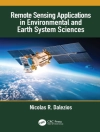This volume discusses the nutraceutical importance, production technologies, management and cultivation practices of underutilized vegetables, which can be described as those vegetable crops which are neither grown commercially on a large scale nor traded widely. While much of the crops addressed in the book are cultivated, traded and consumed at the local level, there are over 60 species of minor vegetables with high growth and yield potentials that are not cultivated to a large extent for greater populations. This work highlights the production technologies needed to grow these vegetables on a larger scale and under various adverse soil and climatic conditions, and their nutritional and medical benefits to assist with food security, health and poverty alleviation in rural areas. Production of underutilized vegetables is low, due to the unavailability of planting material, lack of awareness about the nutritional and medicinal importance among the farmers and inadequateinformation on the production techniques of these crops. In this context, there is an urgent need to take up a program on genetic resources exploration, management, utilization, and improvement of underutilized vegetable crops to ensure food and nutritional security. Readers will learn about these technologies and practices, while also learning about the unique properties and benefits of these underutilized vegetables. The book will be useful for academicians and researchers focusing on vegetable production and breeding, as well as farmers and sustainability scientists looking for underexplored sources of nutrition to benefit large rural populations.
Содержание
1-Underutilized vegetables introduction and identification.- 2-Production technology of underutilized crops of alliaceae family.- 3-Production
technology of underutilized leguminous vegetables.- 4-Production technology of underutilized vegetables of araceae family.- 5-Production technology of underutilized cucurbitaceous.- 6-Production technology of underutilized vegetables of rutaceae family.- 7-Production technology of underutilized vegetables of dioscoreace family.- 8-Production technology of underutilized vegetables of Aizoaceae family.- 9-Production technology of underutilized vegetables of basellaceae family.- 10-Production technology of underutilized vegetables of labitae family.- 11-Production nology of underutilized vegetables of martynaceae family.- 12-Production technology of underutilized vegetables of solanaceae family.- 13-Production technology of underutilized vegetables of apiaceae family.- 14-Production technology of underutilized vegetables of brassicaceae family.- 15-Production technology of underutilized vegetables of chenopodiaceae family.- 16-Production technology of underutilized vegetables of compositae family.- 17-Production technology of underutilized vegetables of euphorbiaceae family.- 18-Production technology of underutilized vegetables of moringaceae family.- 19-Production technology of underutilized vegetables of polygonaceae family.- 20-Production technology of underutilized vegetables of moraceae family.- 21-Production technology of underutilized vegetables of onagraceae family.- 22-Production technology of underutilized vegetables of portulaceae family.- 23-Production technology of underutilized vegetables of cannaceae family.- 24-Production technology of underutilized vegetables of marantaceae family.- 25-Protected cultivation of underutilized vegetables.- 26-Seed production of underutilized vegetables.- 27-Integrated disease management of underutilized vegetables.- 28-Integrated pest management of underutilized vegetables.- 29-Underutelized vegetables are grown in the Hydroponic and aeroponic system.- 30-Sustainable production of underutilized vegetables.
Об авторе
Dr. Savita is an Assistant Professor at Lovely Professional University, Jalandhar, Punjab, India.
Dr. Monisha Rawat is an Assistant Professor at Lovely Professional University, Jalandhar, Punjab, India.












